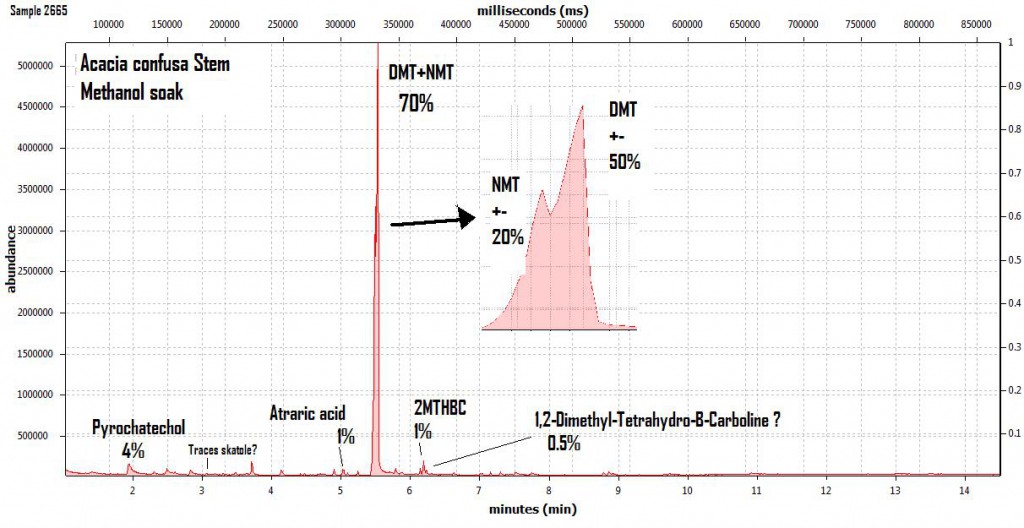Acacia confusa in compare to Mimosa hostilis
Acacia Confusa is similar to Mimosa hostilis (Acacia tenuiflora) the chemical markup of this plant is almost identical. The percentage of alkaloids that Acacia confusa can produce is more than that of Mimosa hostilis, this includes NMT (N-methyl Tryptamine) and DMT (Dimethyl Tryptamine). This makes Acacia confusa a very good alternative for Mimosa hostilis.
The chemical analysis below shows us that both the root and trunk/stem bark of Acacia confusa have almost an identical alkaloid profile. Acacia confusa contains between 1% to 2% total alkaloids, of which 0.5% up to 1.5% is DMT and 0.1% up to 0.5% is NMT.
Chemical analysis of Acacia confusa root bark:
(Image from DMT-Nexus)
Chemical analysis of Acacia confusa stam bark:
(Image from DMT-Nexus)
The main reason why Acacia confusa rootbark is advertised everywhere is because of people who are familiar with Mimosa hostilis rootbark and the belief that it is the only tryptamine containing area of the plant. This has been shown on several studies not to be the case with Acacia confusa! Acacia confusa trunkbark is as rich, or even richer than Mimosa hostilis rootbark.
Acacia confusa contains roughly 23-35% tannins.




 sending...
sending...